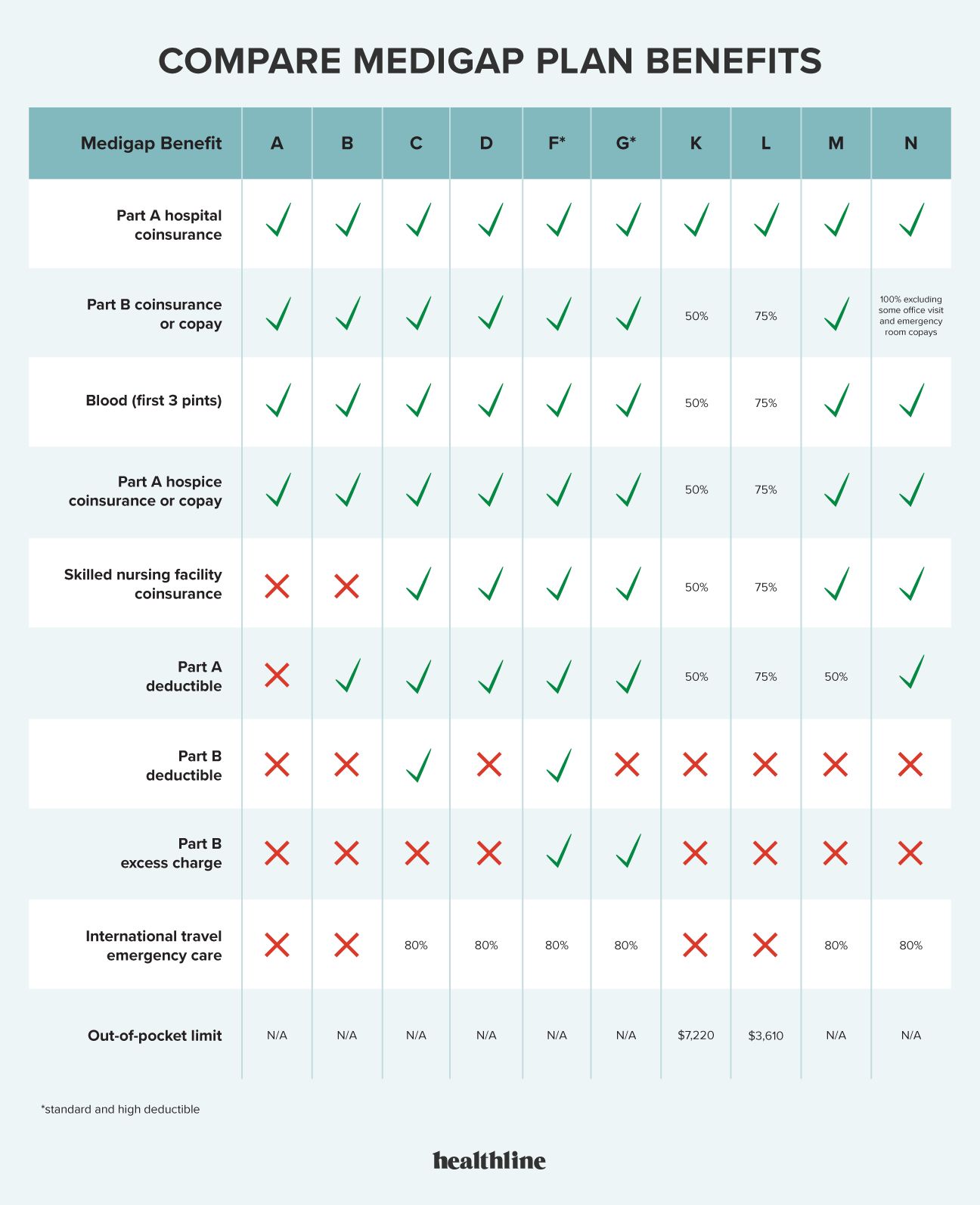You can choose from 10 Medigap plans, which are standardized across the United States. However, your cost will depend on your location and on the company from which you purchase your plan.
Medicare supplement insurance, also known as Medigap, can help cover some of the out-of-pocket costs associated with Original Medicare.
Each Medigap plan has a monthly premium, which covers costs that would normally be your responsibility, such as copayments for doctor’s office visits.

Medigap plans are offered by private insurance companies.
Although the plans themselves are standardized, the monthly premiums may vary based on the company offering the plan, your geographic location, and your overall health.
Medigap plans also typically don’t have deductibles, but some high-deductible options do exist, such as Plan F and Plan G.
Most Medigap policies will also cover your coinsurance costs after you’ve met your deductible. Plan K and Plan L also have maximum out-of-pocket limits.
The Medigap Open Enrollment Period (OEP) starts the first month you have Part B coverage and are 65 or older.
If you’re under 65 and have Medicare because of a disability or end stage renal disease (ESRD), you might not be able to buy a Medigap policy until you turn 65.
However, in some states, insurance companies offer Medigap policies to people under 65. Contact your State Insurance Department to confirm what rights you might have under state law.
To apply, simply fill out an application directly with the company of your choice.
Due to recent changes in regulations, you cannot purchase Plan C or Plan F if you became eligible for Medicare on or after January 1, 2020.
If you were eligible for Medicare in 2019 or earlier, you can still buy plans C and F.
The right plan for you will depend on your needs and budget.
For example, if you’re planning on international travel, you can select a plan that covers foreign travel emergencies. Plans A, B, K, and L don’t offer international travel coverage, so they might not be the best choice for you.
Other considerations include:
- How much can you spend on a premium each month?
- How much do you typically spend on each covered expense?
- Do you have any surgeries or procedures that might require an upcoming hospital stay?
Which Medigap plan is the most comprehensive?
Plan F is considered to be the most comprehensive Medigap plan. However, it’s being phased out.
That said, Plan G is almost as comprehensive. It covers your Part A deductible ($1,676 in 2025), Part A coinsurance, and skilled nursing facility coinsurance. The only difference is that it doesn’t cover the Part B deductible ($257 in 2025).
Let’s say you were planning a total knee replacement in the coming months. During your recovery, you might need to stay in both an inpatient hospital and an inpatient skilled nursing facility. In this case, a plan like Plan G could be helpful.
You can select from 10 different Medigap plans. Each plan covers a different combination of Medicare costs that you’d typically pay out of pocket.
The plans are standardized no matter where you live or what company you select, but your price can vary.
Medigap companies evaluate your coverage application based on your health, sex, and age. If your health declines, you could be charged a higher rate or even denied coverage.
However, if you purchase a Medigap plan during your initial enrollment, you’re guaranteed to get a plan at the company’s best rates.




